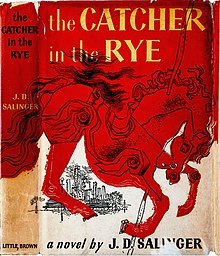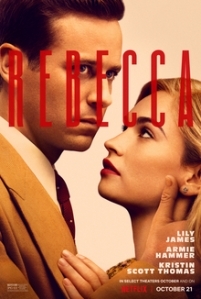How unreliable are we?
 You’ve probably heard the reason why eyewitness accounts of accidents are often wrong. Eyewitnesses may not see 100% of the accident: their view is obscured by other cars/objects, they glance away, etc. But when asked about the accident, they believe they saw the whole thing since the mind tends to fill in the gaps with what probably happened even though they don’t realize there are gaps to be filled in. So, what they saw was a mix of reality and possibility.
You’ve probably heard the reason why eyewitness accounts of accidents are often wrong. Eyewitnesses may not see 100% of the accident: their view is obscured by other cars/objects, they glance away, etc. But when asked about the accident, they believe they saw the whole thing since the mind tends to fill in the gaps with what probably happened even though they don’t realize there are gaps to be filled in. So, what they saw was a mix of reality and possibility.
Many of us face the same patchy viewpoint of things that happened in our own pasts. Sure, sometimes we exaggerate and know that’s what we’re doing–perhaps for so many years we forget we ramped up the action and our role in it. Or, we flat don’t remember the whole thing and have pasted in what probably happened in the way an eyewitness unknowingly fills in what s/he thinks s/he saw.
According to the Innocence Project, “Eyewitness misidentification contributes to an overwhelming majority of wrongful convictions that have been overturned by post-conviction DNA testing.” With that in mind, can we even believe our own stories and memories?
While I believe we know when we’re exaggerating a personal yarn, I don’t think we know how often we do this when we’re telling others about college experiences, military events, or other things that happened long ago. We’re making a lot of it up. And yet, if we read a novel or short story with an unreliable narrator, we’re likely to get angry when we discover we’ve been lied to–unless there’s something in the story that tips us off.
According to MasterClass, “An unreliable narrator is an untrustworthy storyteller, most often used in narratives with a first-person point of view. The unreliable narrator is either deliberately deceptive or unintentionally misguided, forcing the reader to question their credibility as a storyteller.” This site suggests four types of unreliable narrators: (1) Picaro – the one who exaggerates, (2) Madman – the one who is detached from reality, (3) Naif – youthful ignorance, among other things, obscures his/her view of reality, (4) Liar – this person knows s/he is lying for one motivation or another.
 The Catcher in the Rye: Does Holden Caulfield, a troubled teen, see and understand what’s happening around him? Probably not. So we cannot trust him as as a wholly reliable narrator. According to Kylie Brant, “Holden Caulfield in The Catcher in the Rye is the ultimate unreliable narrator. Reeling from a personal trauma, his narrations provide a caustic take on the world around him. His observations of people and events are veiled in pessimism. He tells the reader he lies all the time, but the reader doesn’t necessarily believe that initially because he’s sympathetic and relatable. ”
The Catcher in the Rye: Does Holden Caulfield, a troubled teen, see and understand what’s happening around him? Probably not. So we cannot trust him as as a wholly reliable narrator. According to Kylie Brant, “Holden Caulfield in The Catcher in the Rye is the ultimate unreliable narrator. Reeling from a personal trauma, his narrations provide a caustic take on the world around him. His observations of people and events are veiled in pessimism. He tells the reader he lies all the time, but the reader doesn’t necessarily believe that initially because he’s sympathetic and relatable. ”
 Gone Girl: According to Self-Publishing School, “Gone Girl” by Gillian Flynn presents an enthralling example of an unreliable narrator. As you follow Amy Dunne’s narration, you’ll find yourself constantly questioning her motives and intentions. Amy’s manipulative nature and hidden agenda create shocking plot twists, challenging your understanding of the characters and the events unfolding in the story. The strategic use of unreliable perspectives adds layers of complexity to the narrative, making “Gone Girl” a gripping and unforgettable psychological thriller.”
Gone Girl: According to Self-Publishing School, “Gone Girl” by Gillian Flynn presents an enthralling example of an unreliable narrator. As you follow Amy Dunne’s narration, you’ll find yourself constantly questioning her motives and intentions. Amy’s manipulative nature and hidden agenda create shocking plot twists, challenging your understanding of the characters and the events unfolding in the story. The strategic use of unreliable perspectives adds layers of complexity to the narrative, making “Gone Girl” a gripping and unforgettable psychological thriller.”
 Rebecca by Daphne du Maurier: CBR notes that “Mrs. de Winter, the narrator in the new adaptation of Rebecca from Ben Wheatly, is a voice of confusion who can’t keep the facts straight.” The new Mrs. deWinter cannot compete with the original, so readers/viewers cannot totally accept her perspective. A close look at the original film will show the same lacks of certainty.
Rebecca by Daphne du Maurier: CBR notes that “Mrs. de Winter, the narrator in the new adaptation of Rebecca from Ben Wheatly, is a voice of confusion who can’t keep the facts straight.” The new Mrs. deWinter cannot compete with the original, so readers/viewers cannot totally accept her perspective. A close look at the original film will show the same lacks of certainty.
Truth, it seems, in our lives and in our feature films and novels is always relative. We are the storytellers of our lives as authors are the storytellers of their novels and screenplays. At some point, most of us accept the fact that all of it is unreliable, intentionally or otherwise.
–Malclm



